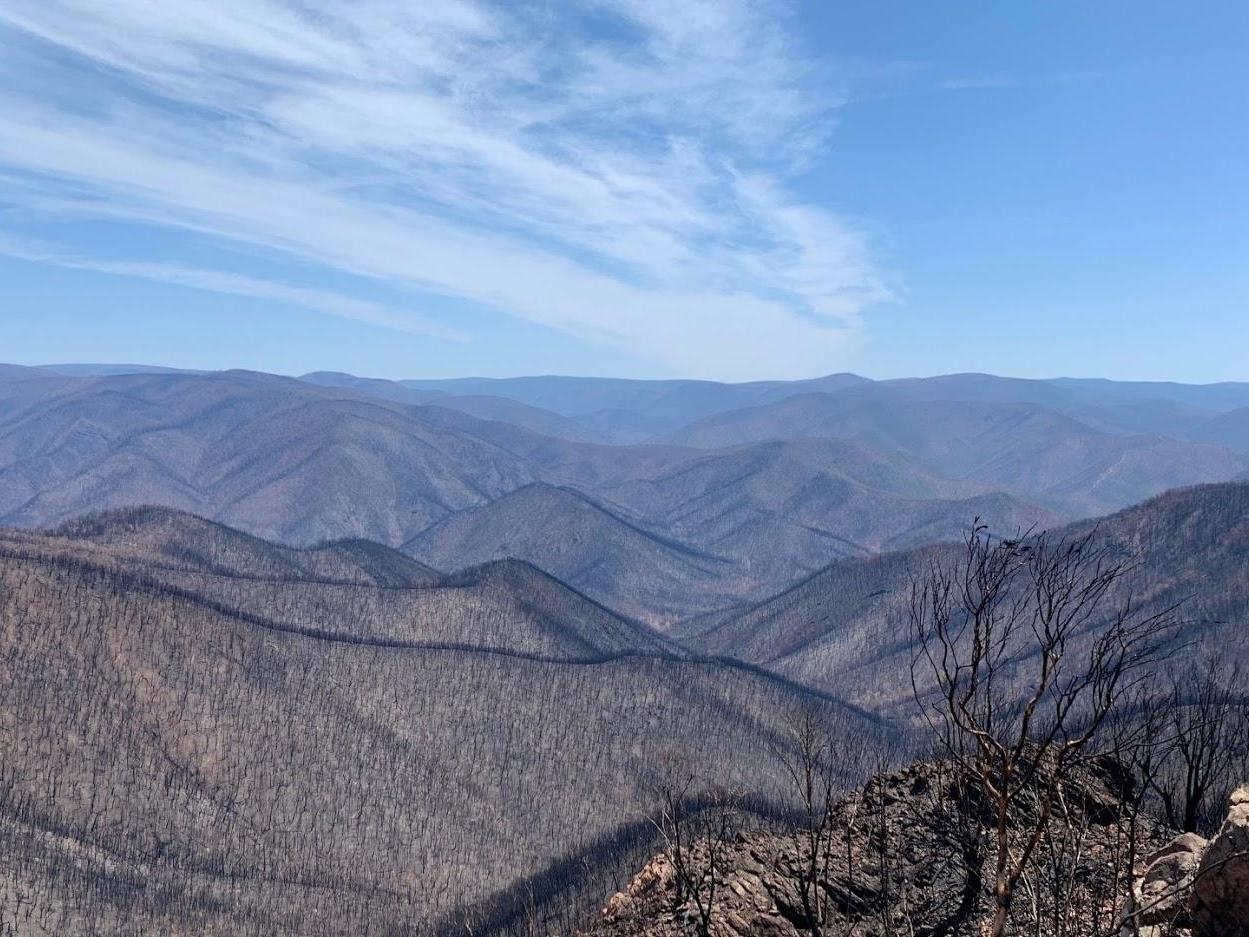Australia wildfires: Devastating photo shows extent of damage
Charred trees seen to stretch for miles in region home to koalas, kangaroos and wombats

Your support helps us to tell the story
From reproductive rights to climate change to Big Tech, The Independent is on the ground when the story is developing. Whether it's investigating the financials of Elon Musk's pro-Trump PAC or producing our latest documentary, 'The A Word', which shines a light on the American women fighting for reproductive rights, we know how important it is to parse out the facts from the messaging.
At such a critical moment in US history, we need reporters on the ground. Your donation allows us to keep sending journalists to speak to both sides of the story.
The Independent is trusted by Americans across the entire political spectrum. And unlike many other quality news outlets, we choose not to lock Americans out of our reporting and analysis with paywalls. We believe quality journalism should be available to everyone, paid for by those who can afford it.
Your support makes all the difference.A stark image taken by a fire service official has laid bare the extent to which wildfires have devastated Australia’s landscapes and the wildlife they once hosted.
The charred remains of trees dominate the photograph as far as the eye can see in the formerly lush valleys in East Gippsland, a region home to koalas, kangaroos and wombats.
The picture, taken by Dion Hooper of Victoria’s forest fire management service, goes some way to illustrating the aftermath of national bushfires estimated to have killed a billion animals, incinerated thousands of homes and left at least 32 people dead.
A deluge of rain provided a brief respite for firefighters tackling the infernos, which have raged since October, more than halving the number of blazes in New South Wales (NSW), Victoria and Queensland.
But meteorologists warned on Monday that this was likely to change in the coming days, forecasting a return to scorching weather that would raise the risk of blazes spreading once again.
“Unfortunately, the reprieve may be short-lived with a blast of heat likely late this week in some areas,” the NSW Bureau of Meteorology wrote on Twitter.
As of Monday, some 59 bush and grass fires were burning in the state, where fire authorities explained how they had been capitalising upon the recent upturn in conditions, and preparing for the coming weeks.
“More than 1,300 firefighters are using more favourable conditions to slow the spread of fires and strengthen containment lines, ahead of forecast increasing temperatures later in the week,” NSW Rural Fire Service said.
Temperatures are predicted to hit 41C on Friday in Melbourne, which is hosting the Australian Open tennis tournament.
Australia’s capital Canberra was again blanketed in a smoky haze on Monday as a result of the fires in NSW, with firefighters also tackling a new blaze in the nearby Namadgi National Park.
A recent poll suggested one in two Australians had donated money to charities and organisations seeking to support firefighters and those affected by the infernos, while Global Fire Emissions Database experts calculated the bushfires had released enough greenhouse gases to double the country’s annual emissions from burning fossil fuels.
Additional reporting by Reuters
Join our commenting forum
Join thought-provoking conversations, follow other Independent readers and see their replies
Comments